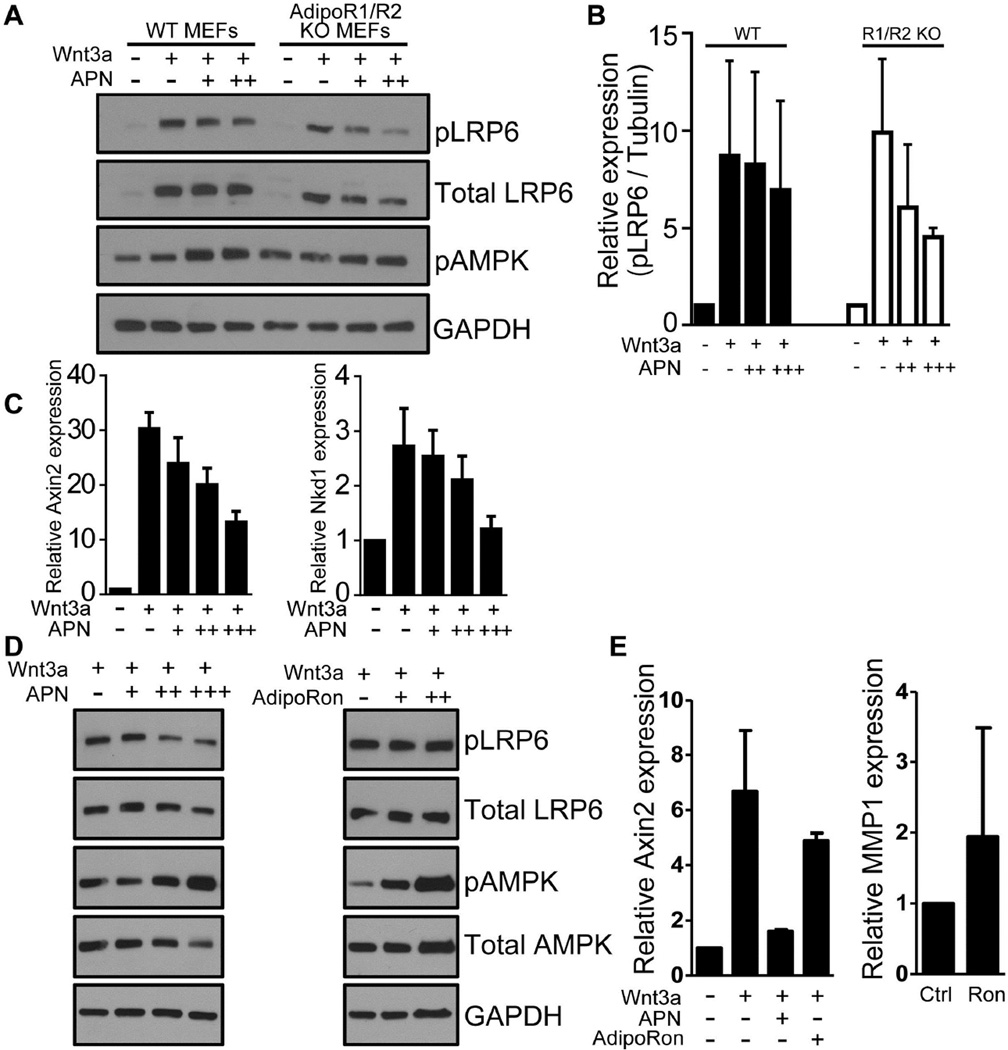Figure 3. AdipoR1 and AdipoR2 receptors are not required for adiponectin-mediated inhibition of LRP6 phosphorylation and Wnt/β-catenin target gene expression.
A-C) Mouse embryonic fibroblasts (WT or AdipoR1/R2 KO) were serum-starved overnight. In A and B, cells were treated with adiponectin (APN; 1, 5, or 10 µg/ml). Two hours later, cells were treated with Wnt3a (100ng/ml), and 30 minutes after Wnt3a treatment, lysates were subjected to immunoblot analysis with antibodies to phosho- and total LRP6. GAPDH served as a loading control. Phosphorylation of AMPK (pAMPK) served as a positive control for the addition of adiponectin (n = 3 independent experiments, including that shown in A). Error bars represent SD. In C, AdipoR1/R2 KO MEFs were treated with APN (1, 5, or 10 µg/ml) 24 hours before treatment with Wnt3a (100ng/ml). Twenty-four hours after Wnt3a treatment, RNA was isolated and qRT-PCR conducted to measure Wnt target genes, including Axin2 (left) and Nkd1 (right). In D and E, fibroblasts were serum-starved overnight and then treated with adiponectin (APN; 1, 5, or 10 µg/ml) or the small-molecule AdipoR1/R2 agonist AdipoRon (20µM or 50µM) two hours before treatment with Wnt3a. (D) Thirty minutes after Wnt3a treatment, lysates were subject to immunoblot analysis. (E) Twenty-four hours after Wnt3a treatment, RNA was isolated and qRTPCR was conducted to measure expression of Wnt target genes including Axin2 (left). Expression of the AMPK target gene MMP1 (right) was assessed to demonstrate effectiveness of AdipoRon at activating signaling via AdipoR1/R2. Bar graphs depict averages of two independent experiments. Error bars represent SD.

